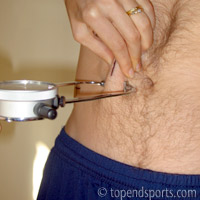This is an old trick that seems to work pretty well for many people. Soaking your feet in tea, and other tips and tricks that can be helpful options for sweaty feet.
What to do:
Boil five tea bags (black tea preferably) in a quart of water for five minutes. When the solution cools, soak your hands or feet for twenty to thirty minutes nightly.
Tea contains tannic acid, which is also found in commercial products such as Ivy Dry, Zilactol, and Zilactin. The astringent properties of tannic acid are thought to be partly responsible for its antiperspirant action.
1)
Soaking in Tea: Tea contains tannins. Tannins act as astringents. The tea plant has a naturally high tannin content, and when its leaves are steeped in hot water they release the tannins which produce the tart flavor of tea.
To release the tannins from the tea leaves, tea has to steep in hot water. I recommend using ordinary black tea rather than decaf or herbal tea. The best thing to do is to brew some “foot tea” using tea bags steeped in hot water:
a) Find a nice foot soaking basin and add one to two quarts of cool water to the basin.
b) Boil a quart of water.
c) After the water boils, turn off heat and place four or five tea bags in the water.
d) Let the tea bags steep for ten to fifteen minutes—the tea cannot be too strong (the stronger the better).
e) Pour “Foot Tea” into the basin of cool water.
f) Soak feet for 30 minutes.
g) Repeat this daily for a week—Make a fresh batch everyday.
Using this method, you can brew a large pot of concentrated hot tea with multiple tea bags and then pour the concentrated hot tea into cool tap water in the soaking basin. Just make sure the water isn’t too hot—lukewarm to cool is fine. Remember heat causes feet to sweat more.
2)
Wear cotton socks: Synthetic materials like nylon, Lycra, and rayon cause feet to sweat more. Cotton and natural materials are absorbent, soft, and tend to breathe better. Choose thicker socks with a high percentage (over 80%) of cotton—the higher the better. Thicker socks are more absorbent and allow better evaporation.
3)
Wash your feet: Wash your feet in warm water with a mild soap at least once a day. Don’t scrub too hard, and don’t use a harsh soap as this can cause the skin to react and sweat more due to inflammation.
4)
Wear socks: You would think that I had already addressed this issue in number two above, but my point here is different. Wear socks when you wear shoes. Wearing shoes without socks causes increased sweating, and shoes can become very damp and moist. Damp shoes become smelly, and bacteria grow like crazy.
5)
Change your socks and shoes: Change your socks and shoes after work or after the gym. A clean, dry pair of socks can make a big difference for sweaty feet.
6)
Avoid wearing plastic shoes: Flip-flops look disgusting after prolonged usage for a reason. The plastic causes feet to sweat. If you have sweaty feet and are choosing a sandal, choose a sandal with a leather upper.
7)
Alternate shoes: Don’t wear the same shoes multiple days in a row; give the shoes a chance to dry out completely to prevent bacteria and fungus from growing. Alternate shoes at the gym from day to day and don’t keep your shoes in your gym bag. Let your shoes air out and dry.
Finally, if your feet are itchy, cracked, or have red or peeling areas, you may have an infection. Persistent foot odor can also be a sign of infection. It never hurts to have your physician take a look at your feet. Often we overlook our feet at a doctor’s visit, but any concern should be addressed. Furthermore, I always recommend a dermatologist visit to any patient with severe hyperhidrosis (excessive sweating) that is affecting their life, work, or personal relationships.
 I'm sure some of you wonder if weight children is okay in children. Some of you may have the perception that weight training is a no-no for children because it will harm their physiological build and stunt their growth. According to the Australian Strength and Training Association, weight training in children can be safe if properly implemented. Here are a few training tips that can be implemented when having your child weight train.
I'm sure some of you wonder if weight children is okay in children. Some of you may have the perception that weight training is a no-no for children because it will harm their physiological build and stunt their growth. According to the Australian Strength and Training Association, weight training in children can be safe if properly implemented. Here are a few training tips that can be implemented when having your child weight train.



